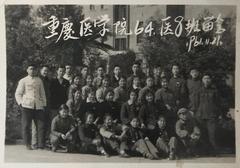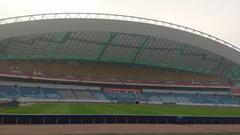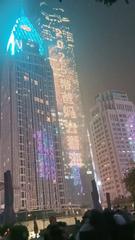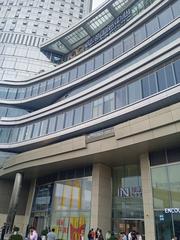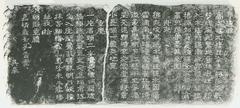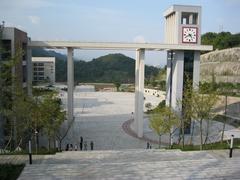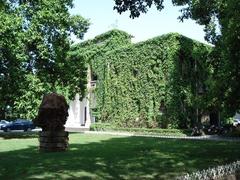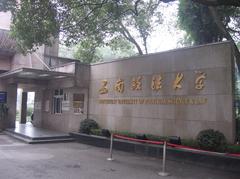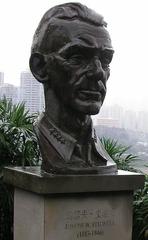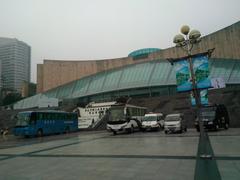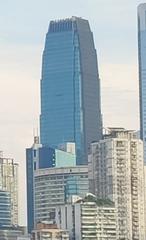Chongqing Zoo Visiting Hours, Tickets, and Travel Guide
Date: 14/06/2025
Introduction
Chongqing Zoo, located in the Jiulongpo District, is one of southwest China’s premier urban wildlife attractions. Established in 1953 and opened to the public in 1955, this expansive zoo covers approximately 45 hectares (111 acres) and is home to over 4,000 animals representing more than 260 species. Its star residents are the giant pandas—22 to 23 individuals, making it one of the largest captive panda populations in China (Wikipedia; iChongqing; China Discovery; Chinatripedia; Chongqing Deep Tour).
Visitors can expect thoughtfully designed thematic zones, high standards of animal welfare, interactive educational exhibits, and a strong emphasis on conservation and research. The zoo is easily accessible via public transport and offers a range of visitor amenities, making it a perfect destination for families, solo travelers, and wildlife enthusiasts alike.
Table of Contents
- Introduction
- History and Cultural Significance
- Visiting Hours, Tickets, and Travel Tips
- Zoo Layout and Key Attractions
- Conservation, Research, and Education
- Seasonal Visitor Experience
- Accessibility and Visitor Facilities
- Getting There and Local Transportation
- Nearby Attractions
- Sustainable Tourism and Future Developments
- Frequently Asked Questions (FAQ)
- Summary and Final Tips
- Sources
History and Cultural Significance
Founding and Early Development (1953–1979):
Originally established as Xiqu Park in 1953 and opened in 1955, Chongqing Zoo started with just 60 animals of 11 species. The zoo’s early expansion was influenced by national interest, including a visit by Mao Zedong in 1958, which led to increased investment and development. By 1960, the zoo was officially renamed “Chongqing Zoo,” and by 1966 it had grown into a significant local institution (Wikipedia; iChongqing).
Reform Era and Modernization (1979–1997):
Following China’s reform policies, the zoo diversified its operations, added cultural events, and improved facilities. It achieved county-level status and reached visitor records in the 1980s, reflecting its growing popularity (iChongqing).
Expansion and National Significance (1997–Present):
With Chongqing’s elevation to municipality status in 1997, the zoo expanded further, both in size and animal population. Today, it is a nationally significant institution, attracting about 3.6 million annual visitors, including 100,000 international tourists (China Discovery; Chinatripedia).
Visiting Hours, Tickets, and Travel Tips
- Opening Hours: Daily, 8:30 AM – 5:30 PM (last entry 5:00 PM). Hours may vary during holidays or winter; check ahead for updates.
- Ticket Prices: Adults: 30–45 RMB; discounted rates for children, students, and seniors. Family and group discounts may be available.
- How to Buy Tickets: Purchase on-site or online via official platforms (Chongqing Deep Tour; Travel China Guide).
- Best Time to Visit: Spring and autumn offer comfortable weather and active animals.
- Visitor Tip: Bring valid ID/passport for discounted tickets; online purchase is recommended during peak seasons to avoid long queues.
Zoo Layout and Key Attractions
Chongqing Zoo is organized into several well-marked thematic zones, each simulating natural habitats to promote animal welfare and visitor immersion (Chinatripedia):
Major Zones
- Giant Panda House:
The highlight of the zoo, featuring spacious indoor and outdoor enclosures for giant pandas. Early morning is best for viewing active pandas. - Red Panda House:
Located near the giant pandas, this area showcases playful red pandas beloved by children and photographers. - Carnivore Zone:
Home to South China tigers, African lions, leopards, bears (including the rare Tibetan bear), wolves, and more. - Herbivore Zone:
See elephants, giraffes, deer, rhinos, kangaroos, and antelopes in open, naturalistic habitats. - Primate Zone:
Includes orangutans, golden snub-nosed monkeys, macaques, and langurs. - Aviary Zone (Bird Language Forest):
An immersive walk-through aviary with over 1,000 birds of more than 200 species. - Penguin House:
A climate-controlled enclosure with underwater viewing of penguins in a simulated Antarctic habitat. - Children’s Activity Zone & Cute Animal Zone:
Interactive play areas and exhibits for kids, featuring rabbits, guinea pigs, goats, and scheduled feeding sessions. - Goldfish House & Reptile House:
Exhibits of ornamental goldfish and a wide variety of amphibians and reptiles.
Facilities and Amenities
- Ample rest areas, shaded benches, and picnic spots.
- Food outlets, a tea house, and restaurants.
- Souvenir shops near key exhibits.
- Clean restrooms and accessible facilities throughout.
- Stroller and wheelchair rental, with accessible pathways and ramps.
Conservation, Research, and Education
Chongqing Zoo is accredited by the World Association of Zoos and Aquariums (WAZA), reflecting its commitment to international standards in animal care (Wikipedia). The zoo leads in breeding programs for endangered species, notably giant pandas, and contributes to global conservation through research, captive breeding, and public education (Chinatripedia; China Discovery).
Educational programs include guided tours, interactive exhibits, animal shows, and workshops—especially valuable for school groups and families. Interpretive signage is bilingual (Chinese and English), enhancing accessibility for international visitors.
Seasonal Visitor Experience
- Spring (March–May):
Mild weather, blooming gardens, and active animals—ideal for leisurely exploration and photography (TravelSetu). - Summer (June–August):
Peak season with high temperatures and crowds; visit early or late in the day and stay hydrated (Traveler Bibles). - Autumn (September–November):
Cool, pleasant weather and beautiful foliage. Fewer crowds and special cultural events (Traveler Bibles). - Winter (December–February):
Quietest season; some outdoor exhibits have reduced hours, but the zoo remains open (TravelSetu).
Accessibility and Visitor Facilities
- Accessibility:
The zoo is wheelchair-friendly, with ramps, accessible restrooms, and wide paved paths. Stroller rental is also available. - Navigation:
Maps are available at entrances and online. Bilingual signage aids navigation for international guests. - Amenities:
Lockers, souvenir shops, and a variety of food options are conveniently located. Restrooms are clean and well distributed. - Visitor Etiquette:
Do not feed animals outside designated areas. Keep noise low, respect barriers, and dispose of litter responsibly.
Getting There and Local Transportation
- By Metro: Take Chongqing Metro Line 2 to Zoo Station; follow signage to the entrance.
- By Bus: Multiple city bus routes stop near the zoo.
- By Taxi/Ride-hailing: Convenient for families or groups.
- Parking: On-site parking is available but may be limited during peak times.
Nearby Attractions
Enhance your visit by exploring nearby cultural and historical sites such as:
- 501 Art Base
- Jiaotong Tea House
- Ciqikou Ancient Town
- Three Gorges Museum
- Hongya Cave
These attractions provide a broader cultural experience, complementing your day at the zoo.
Sustainable Tourism and Future Developments
Chongqing Zoo is committed to sustainable practices, including:
- Habitat restoration and urban greening
- Energy-efficient infrastructure and water conservation
- Waste reduction and recycling initiatives
- Community engagement through educational outreach
- Strategic plans to support Chongqing’s green city vision and potential UNESCO recognition
These efforts ensure the zoo remains a leader in conservation, education, and responsible tourism.
Frequently Asked Questions (FAQ)
Q: What are the current visiting hours?
A: 8:30 AM – 5:30 PM daily; last entry at 5:00 PM.
Q: How much are tickets?
A: Adult tickets: 30–45 RMB. Discounts for children, students, and seniors.
Q: Is the zoo accessible?
A: Yes, with wheelchair and stroller access, accessible restrooms, and ramps.
Q: Are guided tours available?
A: Yes, guided tours and educational programs are offered. Pre-booking is recommended during busy periods.
Q: Can I take photos?
A: Yes, photography is allowed, but avoid flash in sensitive areas.
Q: What’s the best time to visit?
A: Spring and autumn offer the best weather and fewer crowds.
Q: How do I get there by public transport?
A: Take Metro Line 2 to Zoo Station or use city buses/taxis.
Summary and Final Tips
Chongqing Zoo stands out as a model for urban ecological stewardship, balancing rich heritage, modern visitor amenities, and global conservation efforts. With its diverse animal exhibits, immersive zones, and educational experiences, it offers something for everyone. For the best experience:
- Check visiting hours and ticket options in advance
- Visit during shoulder seasons for pleasant weather
- Use public transport for convenience
- Respect zoo rules and support conservation initiatives
For up-to-date information, download the Audiala app, visit official travel resources, and follow trustworthy guides.
Sources
- Wikipedia - Chongqing Zoo
- iChongqing - Chongqing Zoo
- China Discovery - Chongqing Zoo
- Chinatripedia - Chongqing Zoo Ticket Price, Opening Hours, Location and Highlights
- Chongqing Deep Tour - Guide to Chongqing Zoo: Everything You Need to Know for a Fun Visit
- China Highlights - Chongqing Zoo
- Travel China Guide - Chongqing Zoo
- TravelSetu - Best Time to Visit Chongqing Zoo
- Traveler Bibles - Best Time to Visit Chongqing Zoo

